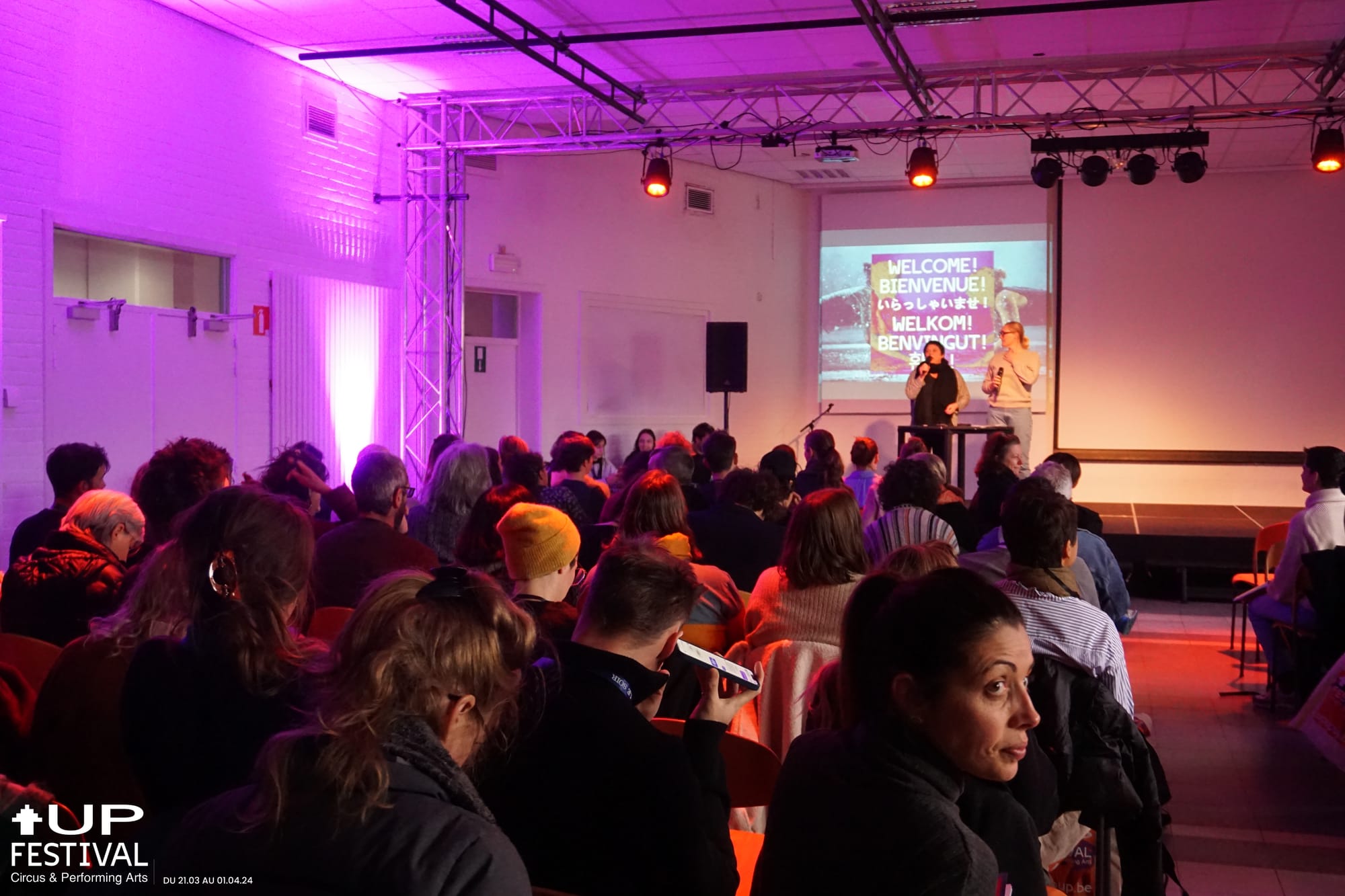UP Festival 2024: the Ethos of a European festival

Thanks to Visit Brussels and our involvement in the INCAM network, from 26th to 29th March Around About Circus participated in the biannual Festival UP PROS days led by the eponymous circus creation centre in the quarter of Molenbeek. If one of the UP centre's main functions is to support professional connections in every possible way, the UP energetic mood reveals its full potential at work during the festival. As the epicentre of international activities, this year's edition gathered international guests hosting focus sessions on Catalonia, Japan, and Taiwan, together with the Belgium pitches, giving the participants a glimpse of the new circus artistic productions baking in these countries and providing great connections among people and locations. And then, we attended performances, from the already mentioned countries and more, in a balanced international discovering mood. Elena Stanciu recorded thoughts and impressions during the festival, which we are publishing in this article.
*INCAM is the International Network for Circus Arts Magazines. Present at the 2024 edition of UP were: Around About Circus (DE), DYNAMO Magazine (DK), StageLync (USA), Malabart (ES), Sirkus Pyramidi (FI), Maison des Jonglages (FR), Circusmagazine (BE), Juggling Magazine (IT)
What is the function of a circus festival? It surely differs depending on context, but it must be a mix of, among others: dedication to showcasing emerging art, audience development, overall sector development and growth, international promotion of artists, and connection of professionals. Enthralling, pleasing, fascinating, and provoking experiences are often also a function of a festival, and the result of programming committed to a sharp curatorial point of view, outstanding taste, and a diversity of performances on offer.
To “combine conviviality and high standards,” the 2024 edition of UP Festival subtly embraced this multifaceted role and affirmed these implicit functions. UP proposed a dense programme of pitches and showcases, with dedicated actions to foster international connections (with Catalan, Japanese, Taiwanese, and Korean artists and companies), and 28 new projects pitched over three days of presentations.
The diversity in themes, approaches, disciplines, and aesthetics shows an equal commitment of the festival to surprise and stimulate its audience, cultivate a fertile space for art encounters, and emphasise an unapologetic belief in circus art’s capacity to connect across languages, borders, and identities. A focus on recent productions and upcoming art, and a format that allows for new professional relationships to flourish speaks to the festival’s ethos as an important hub for the artistic and structural development of the European circus.

New works: pitches and showcases
The project pitches at UP festival included 28 artists, with additional double-bill presentations from Taiwan, Japan, and Korea. Over three sessions, in the mornings of the professionals’ programme, artists and companies presented upcoming work, with support from venues, funders, or residency centres. These meetings between professionals and artists in the middle of the creation process are of course a recipe for new projects and collaborations. Attending the pitches as a media delegation, with the INCAM group, we couldn’t help but observe red threads and thematic points of importance for the new productions.
Topics with a political tone were present in the projects, albeit in different locations and a variety of contexts. In Treeming (Anke Flévez & Mille Lundt), humans’ relationships to trees are revisited, through acrobatics, movement, and participatory action. Food (Michael Zandl) proposes a critique of consumerism, expressed through food consumption. Here, Michael uses juggling, physical humour and magie nouvelle to stage a concern with the effects of blind consumerism on our environment and societies. Similarly, in #ClickIt, Mary Schroeder and Anne Julia Neumann of Hopscotch company delve into the omnipresence of mobile phones, tech gadgets, and consequent new models of connectivity, also asking with what effect on human relationships.
An interest in materials, objects, and new approaches to disciplines and apparatuses was also a major thread in the presentations. In Chwallow (L’Habeas Corpus company) materials (fabric, plastic, slime) and colour receive a new position on stage and in artistic research and are used to enact playful constructions and deconstructions of space. Scenography is explored as a narrative tool, and through object manipulation, concepts of the grotesque, form and deformity, and the absurd are given space.
Absurdity and existential concerns are also present in Eclipse (Cirque des Petites Natures), where light, darkness, clowning and juggling are used to manipulate the sense of space and presence and explore the aesthetic qualities of solitude. Minimalism with notes of film noir announces a beautiful performance, in which reality slowly gives way to the speculative.
Innovation and novel ways of engaging with the apparatus are equally present across the three days of presentations. To name just two examples, in Ballroom (Post Uit Hessdalen & Grupping Stijn) technology is used to create magic, in a new take on juggling, following neatly in mood and aesthetic the company’s previous work—Man Strikes Back. A proposal for a new apparatus we see as well in Mouja (Rabie Fadil), in which the circus object is created with inspiration from the waves, and the themes of the performance address migration, politics of mobility, and water crossing.
Following the pitches, a selection of showcases illustrates an equally broad, current, and important spectrum of interest. The Catalan Arts focus proposed a look at human relationships, playfulness, and the role of performativity in creating a sense of togetherness (A Rienda Suelta, by Du’K’To); an innovative take on deconstructive juggling (Languages, by Impulsos); and an exploration of barriers and thresholds, the quality of being simultaneously inside and outside, in the outstanding performance Ákri by Manel Rosés.

Conversations with Death
What could be the sources of humour in a performance about death? What is it that tickles us about this grand existential event? Why are our finality and demise funny? Bastian Von Marttens wraps dark humour in a coat of gentle theatre light; he tricks and teases dark vistas of loneliness in the world beyond, with playful juggling, magical allusions, and minimal scenography with a mind of its own. Bastian’s dialogue with death is here not a cry for help, or an exchange meant to fill unbearable loneliness. It is rather a staging of empathy with a future self. Existential, yet without succumbing to agony, the performance playfully challenges the idea that we will all be alone in death; instead, we might, if we learn to allow it, be joined by the joy of having lived.

The quality of slowing down: Permit, oh permit my soul to rebel
Permit, oh permit my soul to rebel is a “relaxed performance,” last in the Trilogy of the Imagination by Side Show company. Created and directed by Aline Breucker & Quintijn Ketels, the performance inverts normative features of circus: the spectacular, the surprise, the unexpected—they are all removed as a currency in the exchange with the audience. Instead, the performers announce the order and sometimes the content of the acts, while the progress of the play is marked visibly. Explicitly a creation in which the needs of neurodivergent audiences are considered, the performance has important implications for the artform.
[read more about the show in our article ON CARE]
If circus (often) needs to grip, seduce, and entertain, Permit, oh permit… questions what some more inclusive tools for this “seduction” can be. Dramaturgically, the creation adopts a patchwork style, with short individual instalments and acts following one another; the audience is equally enriched both if they remember each act in order, or if they enjoy each act anew. The show does not take a moralistic stance towards spectacle as we know it; instead, it explores alternative ways to construct it, where the sources of enjoyment and pleasure are relocated. Sensory overload is replaced with an open invitation to use one’s senses, and control the intensity of engagement with what is being seen, heard, touched, and in the end, felt.

Human allegiance and concerns: Histoire de Laine
An invitation to slowing down and rescaling is also launched in Histoire de Laine by Cia Rauxa, a circus-meets-puppet-theatre performance, in which a 15cm stick figure acrobat made of thread stages different circus acts. Aided by its human creator, a demiurge of sorts, the little figure goes through highs and lows and consequently takes the audience on an emotional journey.
The performance is an equal parts ballad, a story of becoming, and the parable of modernity, a call to rethink the location of empathy, the primacy of virtuosity, and the moral absolutes around ideas of strength, power, freedom, speed, or progress. The stick figure in Histoire de Laine is being handled and moved—either by the hands of its creator-turned-manipulator or by the blowing of a wind machine—and their adventures are enhanced with a video camera that projects on a screen, thus directing the audience’s gaze.
Genderless, ageless, faceless—the little figure is nevertheless animated throughout the show, becoming itself a projection of human affect, desires, and intentions. The audience slowly finds allegiance and empathy with the struggles of the little figure, and we all silently cheer on the miniature circus tricks attempted. The performance serves to explore the quality of emotional attachment to social connection, the constructed meaning and value often arbitrarily attributed to events, objects, and people around us. Histoire de Laine is thus a story of a piece of wool, but equally so a story about human attention, allegiance, and purpose.

Heritage and the experience of space: Emisfero & Décrochez-moi ça
Tent performances have a special place in a circus festival. The tent establishes a spatial and temporal relationship between the performance and the audience, not least impacted by the heritage and history of circus. The ring itself is circus legacy, and contemporary tent performances enter, to some extent, this lineage of the artform. Emisfero (MagdaClan) and Décrochez-moi ça (Bêtes de Foire) are two tent performances programmed in UP 2024, which arguably tap into the audience’s collective affect, memory, and experiences around circus presented in a tent. Whereas Emisfero proposed a high-intensity, dynamic, diverse acrobatic show, Décrochez-moi ça welcomed audiences in an atmospheric universe, moody, vintage, and fashionably dusty.
Inspired by the workings of the human brain, and the “more than 60,000 thoughts per day” produced by our brains, Emisfero blends rationality and affect, imagination and reason. In a captivating performance that plays with the illusion of spontaneity, Emisfero showcases an unbelievably rich selection of disciplines, with a high technical level matching the unique aesthetics. If the tented ring in Emisfero can easily become a visual metaphor (the human mind, the universe), the smaller scale marquee of Bêtes de Foire somehow resists metaphor, and anchors all senses; populated by different characters, in an abstract time and unknown (and unknowable) place. Vintage costumes, notes of magical realism, and DIY scenography play a time-travelling role, aided by sound design and olfactory experiences.
While Emisfero creates a sensation of arrival, that we’ve entered a space of endless possibility, in Décrochez-moi ça the sensation is of impending departure—we might all pick up and become nomads, under the auspices of this larger-than-life small tent.


